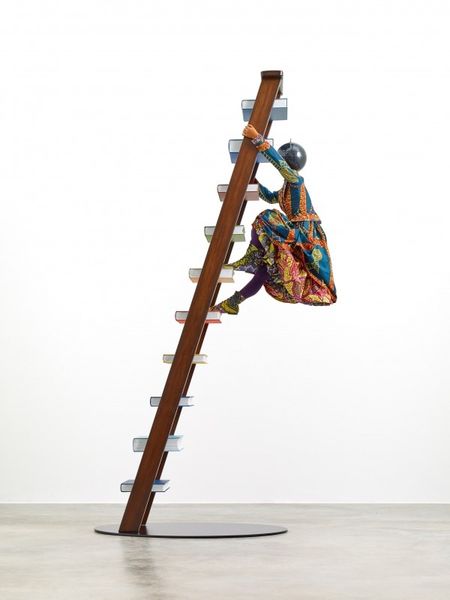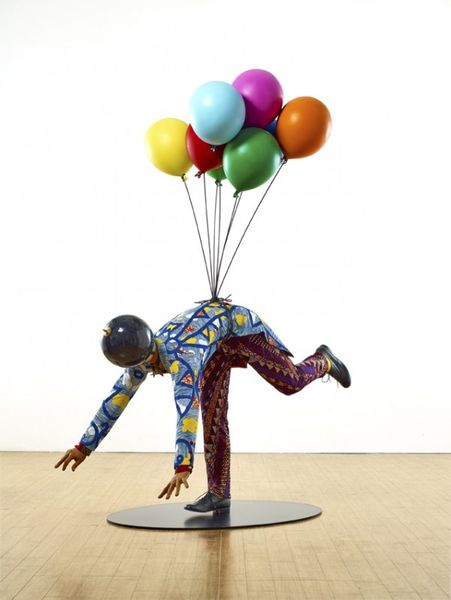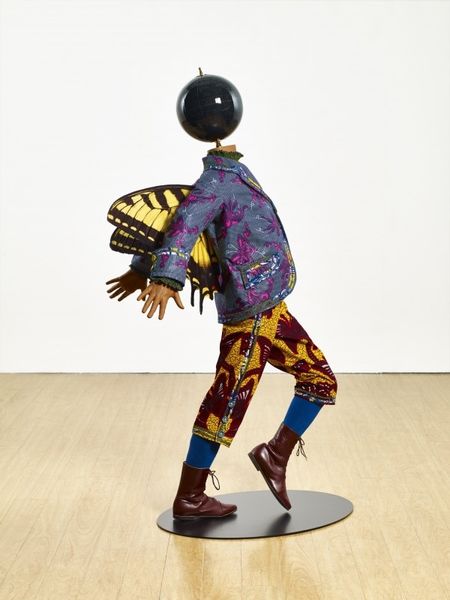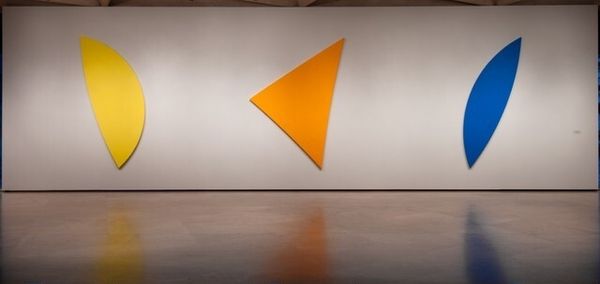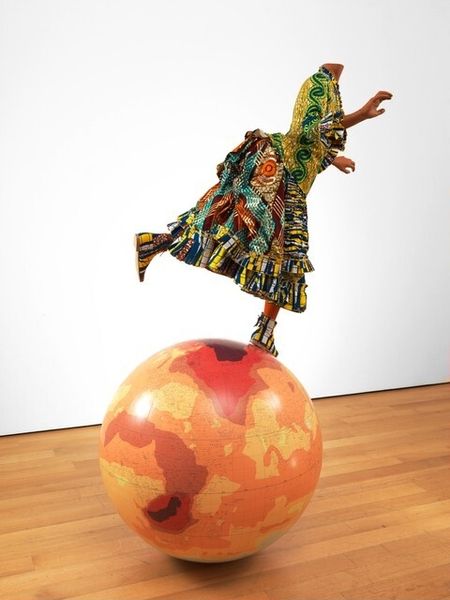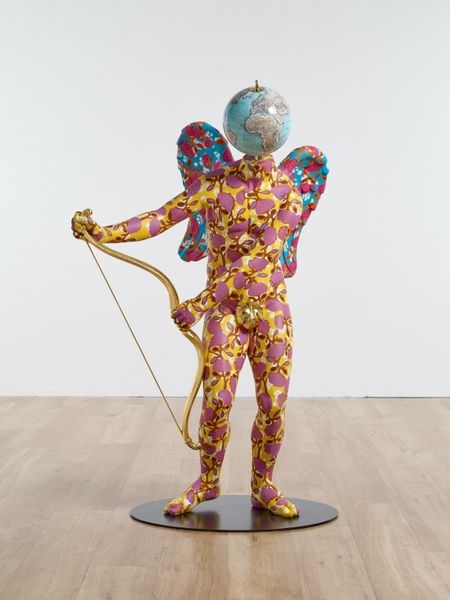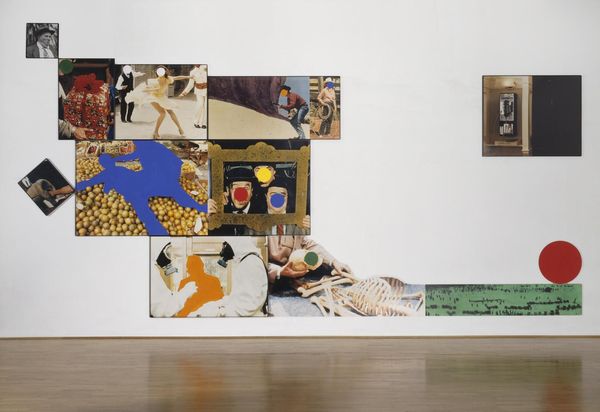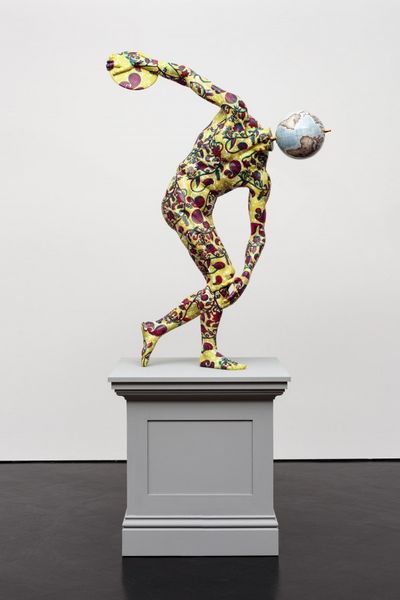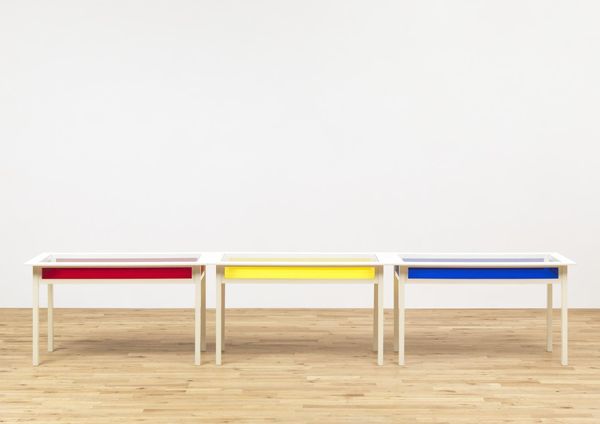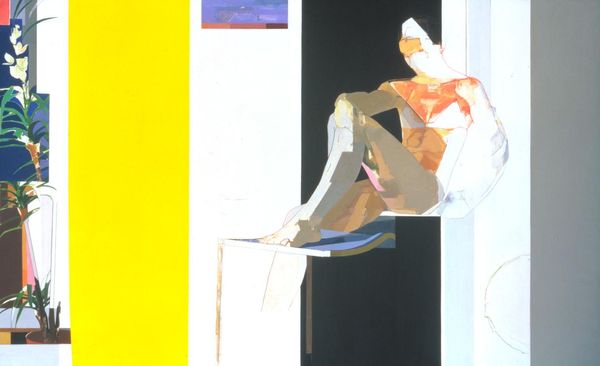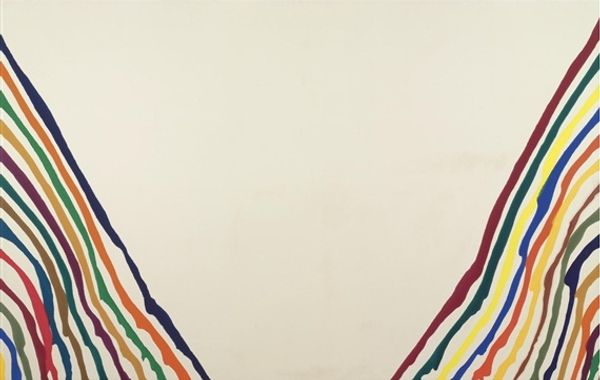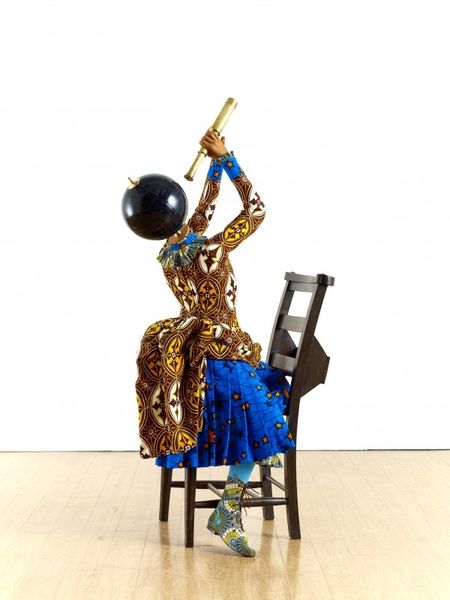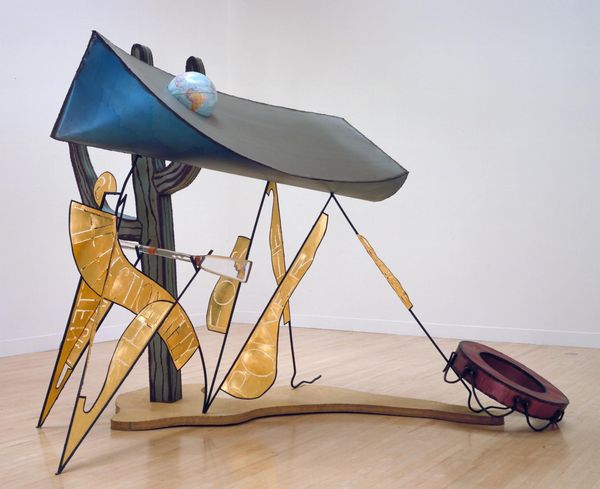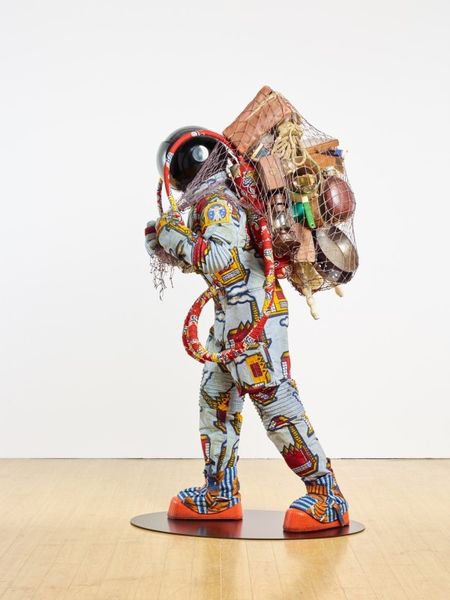
Copyright: Yinka Shonibare,Fair Use
Curator: What a striking piece! This is Yinka Shonibare's "END OF EMPIRE," a mixed-media installation from 2016. Editor: It's immediately unsettling. The headless figures with globes where their heads should be, teetering on a seesaw…it’s a rather grim image of power and balance. Curator: Absolutely. Shonibare’s work often deals with identity politics and postcolonial themes, using vivid Dutch wax fabric, a material with a complex history, to dress these figures. The fabric, originally Indonesian, was mass-produced by the British and later adopted by West African countries, becoming a symbol of African identity and independence. Editor: That visual irony is potent. These fabrics become a powerful cultural signifier juxtaposed with the globe heads, universal symbols of Earth, hinting at a history of unbalanced power dynamics and exploitation across the globe. What do the raised hands signify to you? Are they gestures of surrender, celebration, or maybe even of maintaining an unstable balance? Curator: The ambiguity is key, isn't it? The gestures leave room for interpretation about their complicity. It reflects Shonibare's exploration into the intersections of race, class, and colonial legacy, urging viewers to confront these histories. They might signify grasping for control in an inherently unstable system, or perhaps an acknowledgment of its precariousness. Editor: And this precariousness of the balance is captured in the symbol of the seesaw: a potent image that speaks of interdependence. I'm reminded of scales, symbols of justice and balance which feature the figure of a woman to represent impartiality, where Shonibare replaces this with a universal image. It underscores a critical observation that power relations depend upon fragile equilibrium, threatening to tumble if challenged. Curator: It forces us to consider the power structures at play – who benefits, who is disadvantaged, and what the consequences are. Shonibare compels us to remember our shared global histories through these loaded materials and unsettling figuration. Editor: I agree, there's so much layered into a seemingly simple setup. Seeing such a direct symbolism triggers uncomfortable reflections on the past's continuous role in the present and its future uncertainties.
Comments
No comments
Be the first to comment and join the conversation on the ultimate creative platform.
